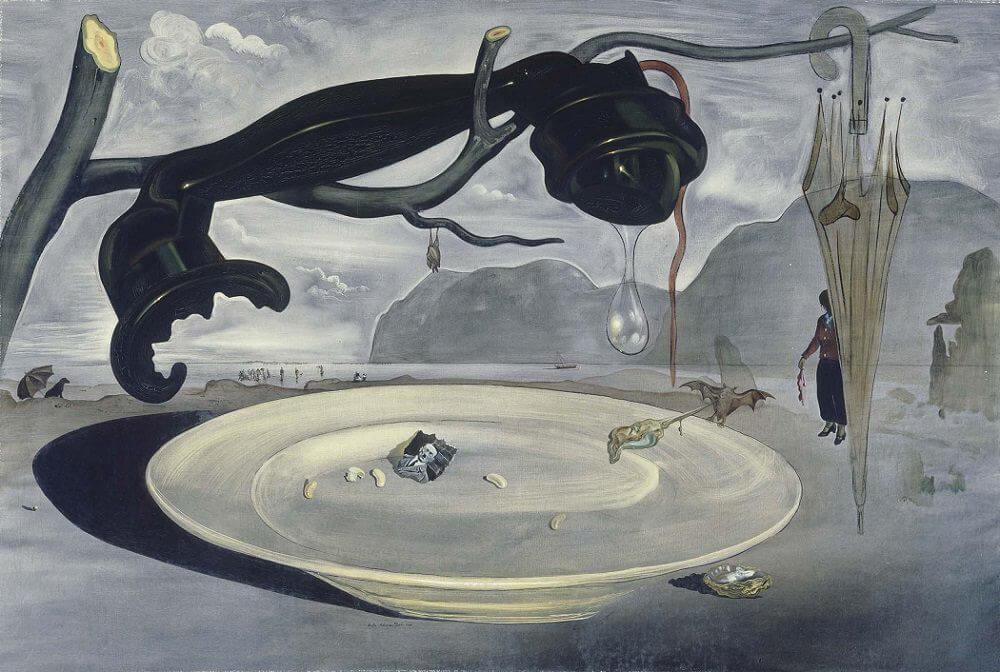The Enigma of Hitler, 1939 by Salvador Dali

The 1930s saw a new addition to Dali's themes relating to Surrealism, this time the historic figure of Adolf Hitler, who the artist identified with Maldoror, inspiring works like The Enigma of Hitler, from 1939. For the Surrealists - who had never been comfortable with the brazen way in which Salvador Dali exhibited his sexual obsessions in public - Dali's representation of Hitler was beyond the pale, and it was decided to expel him from the group led by Andre Breton. So Dali left Europe to settle in the United States, at the same time starting a series of paintings with a mystical-religious theme, which would be followed by the group of works that make up what is called his nuclear period.
Like many surrealists, Dali arguably reached his artistic apex prior to the end of World War Two. The end of the war signaled inevitable, major changes for the movement; the surrealists' official position of exile during the war garnered much critical flack, as did their apparent lack of artistic response to the changing times. Dali once described his obsession with Hitler to Andre Parinaud as a strange homoerotic fantasy:
I often dreamed of Hitler as a woman. His flesh, which I had imagined whiter than white, ravished me... There was no reason for me to stop telling one and all that to me Hitler embodied the perfect image of the great masochist who would unleash a world war solely for the pleasure of losing and burying himself beneath the rubble of an empire; the gratuitous action par excellence that should indeed have warranted the admiration of the Surrealists."























